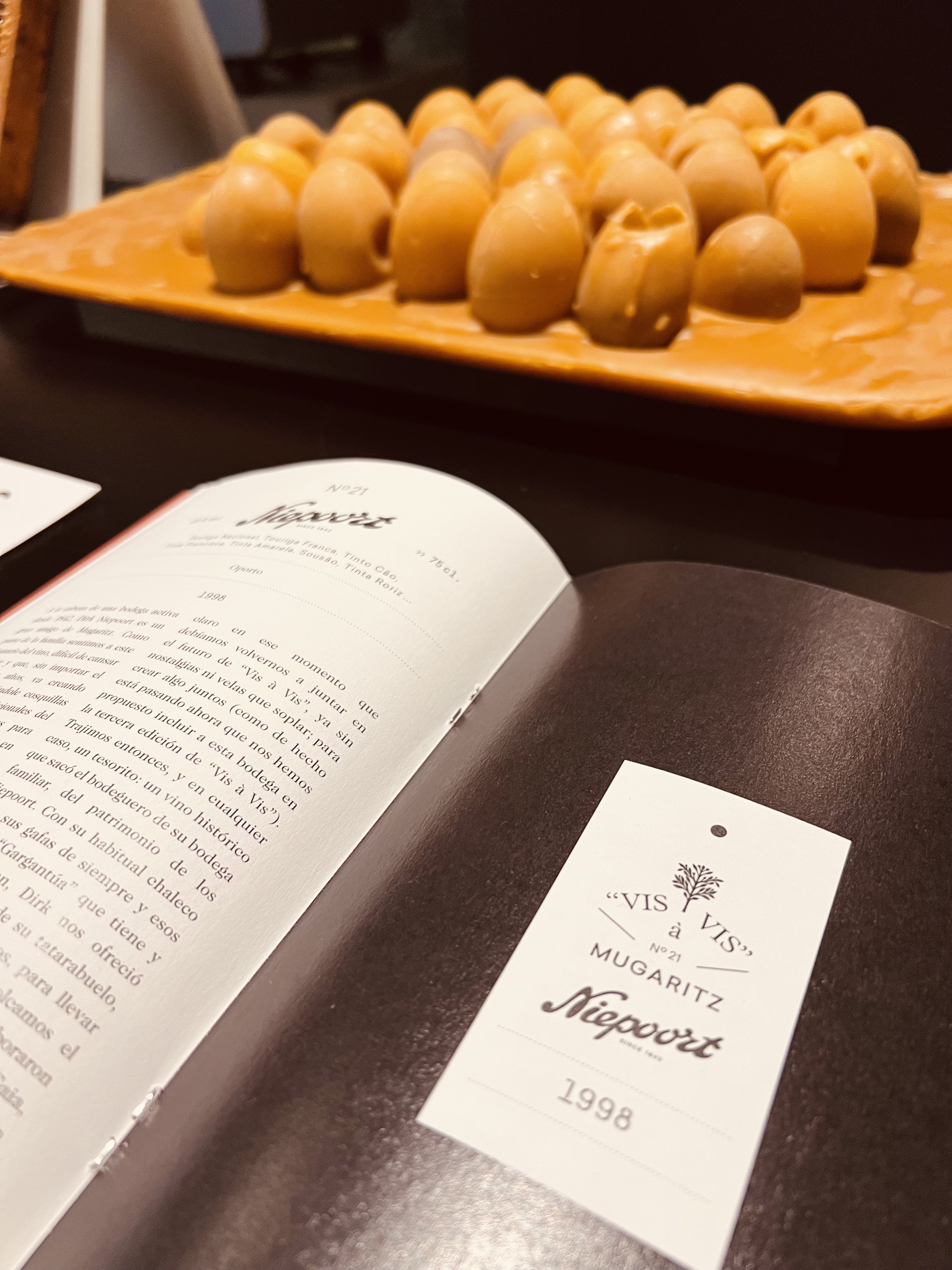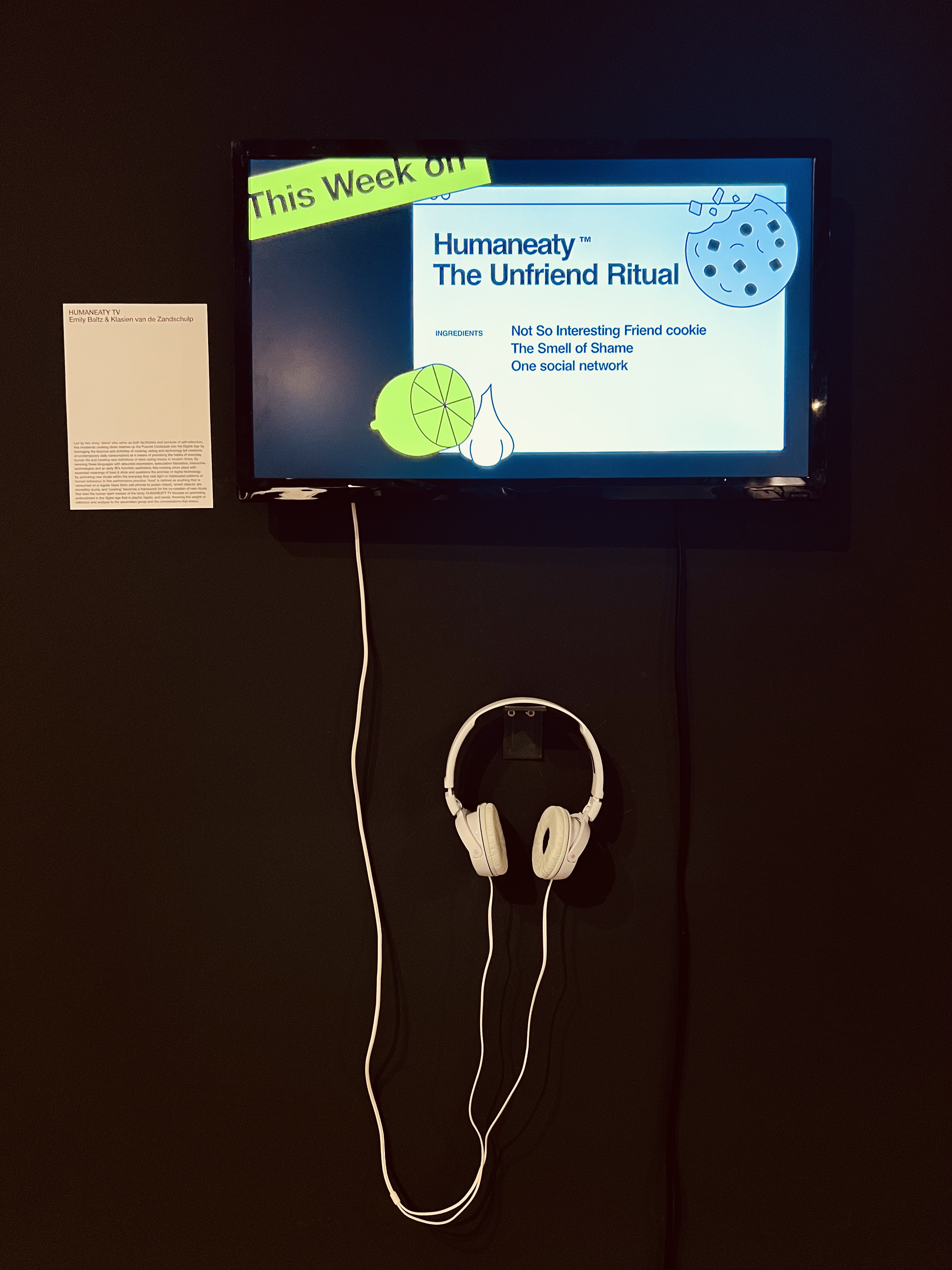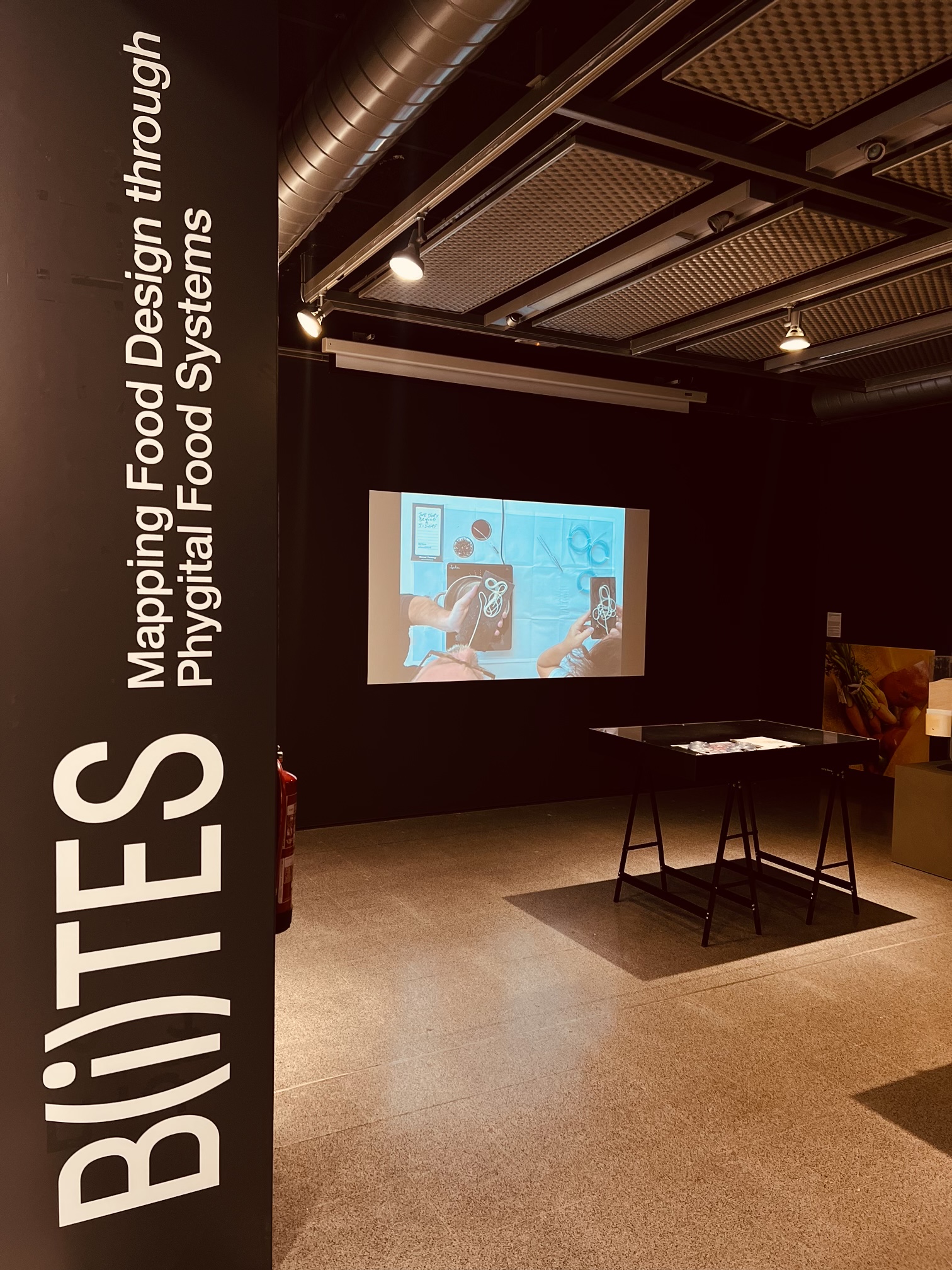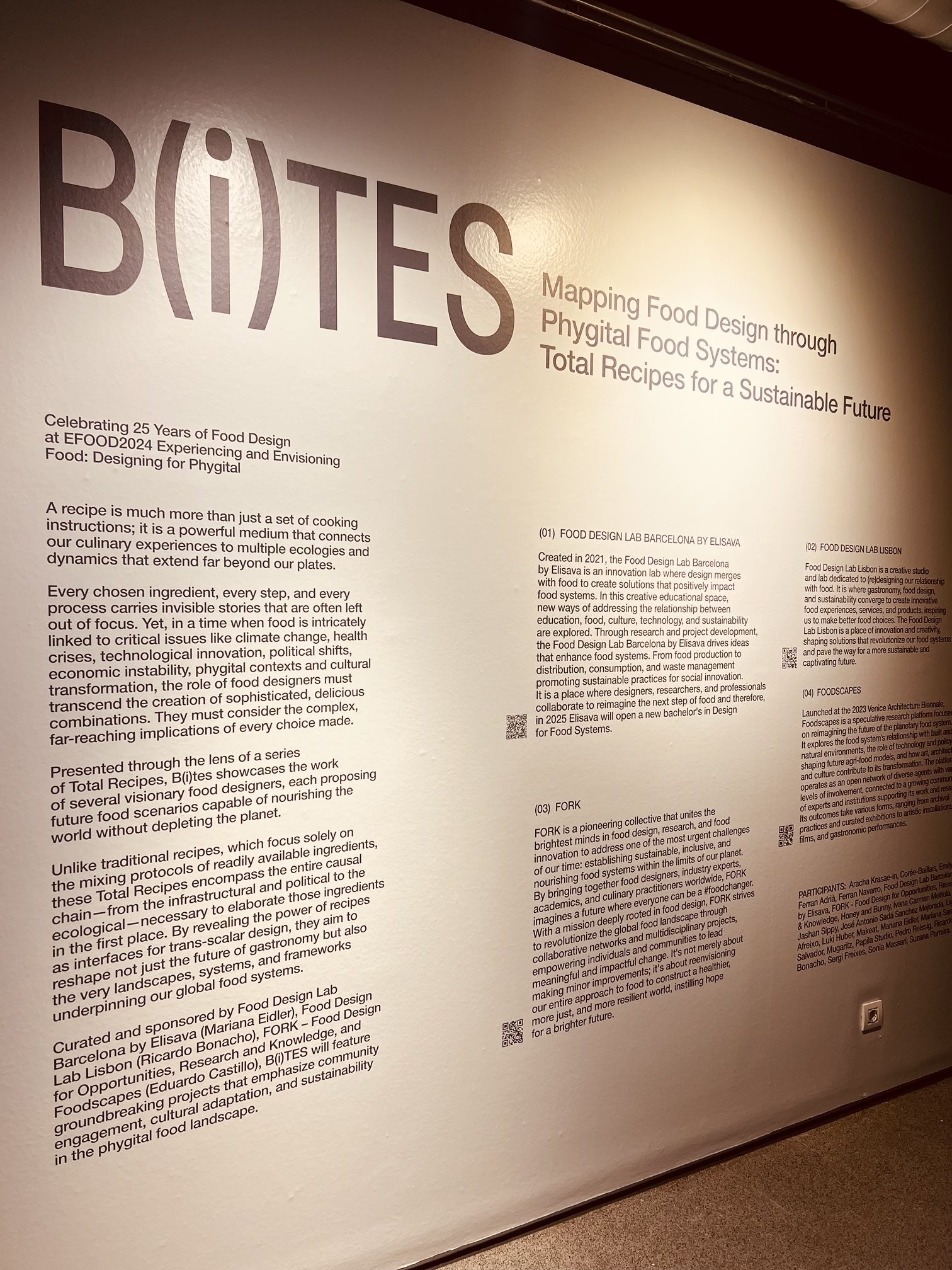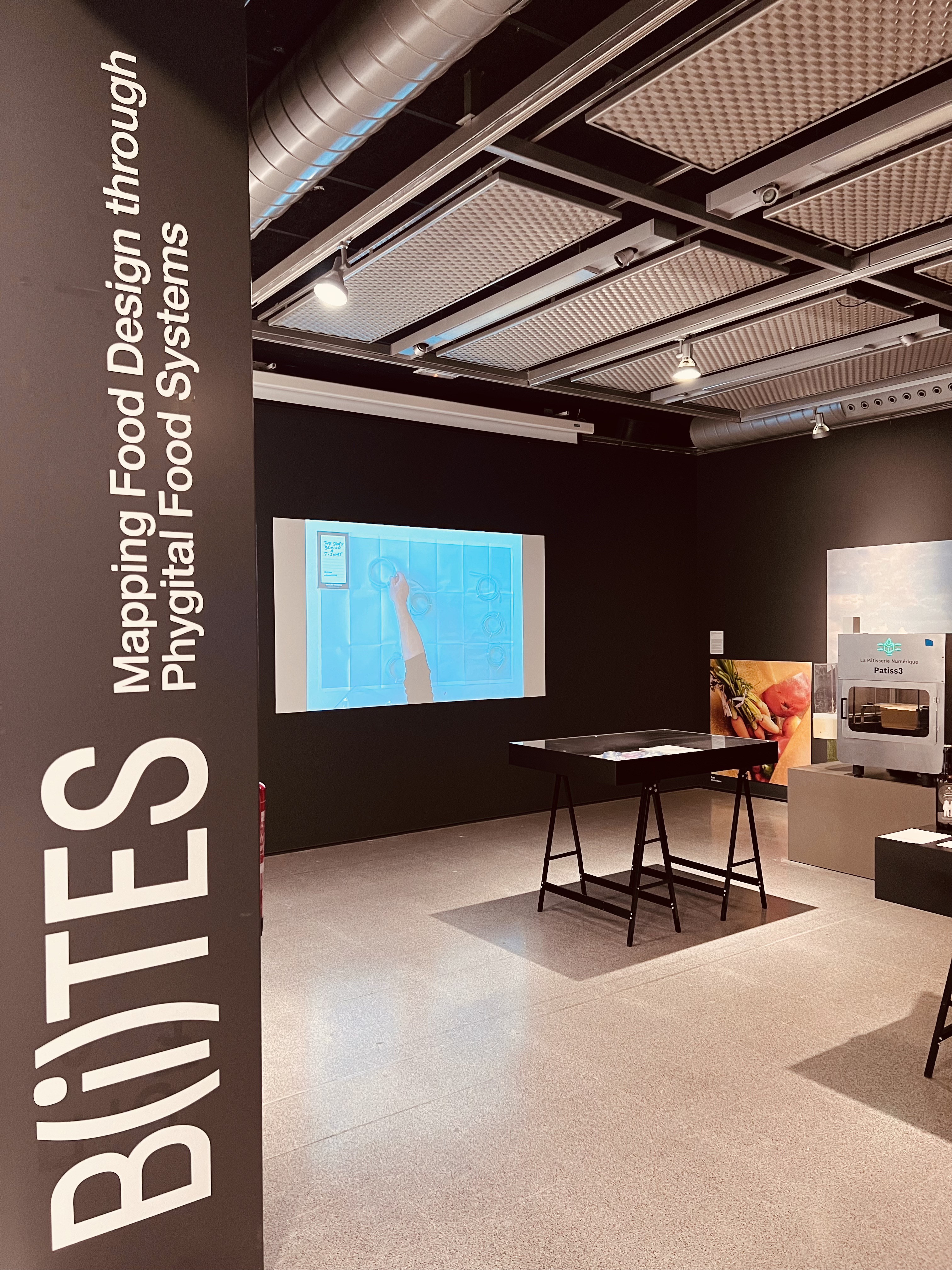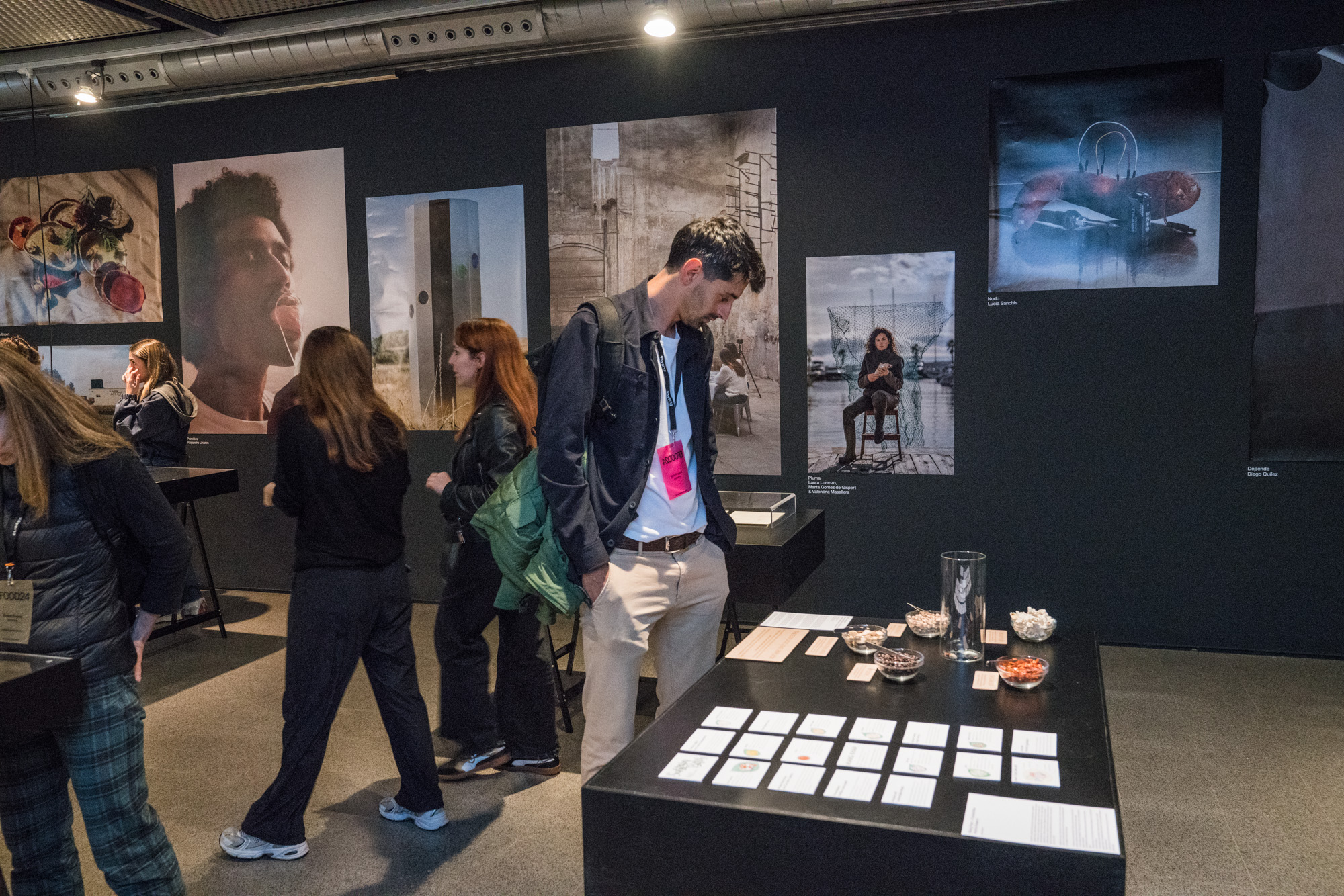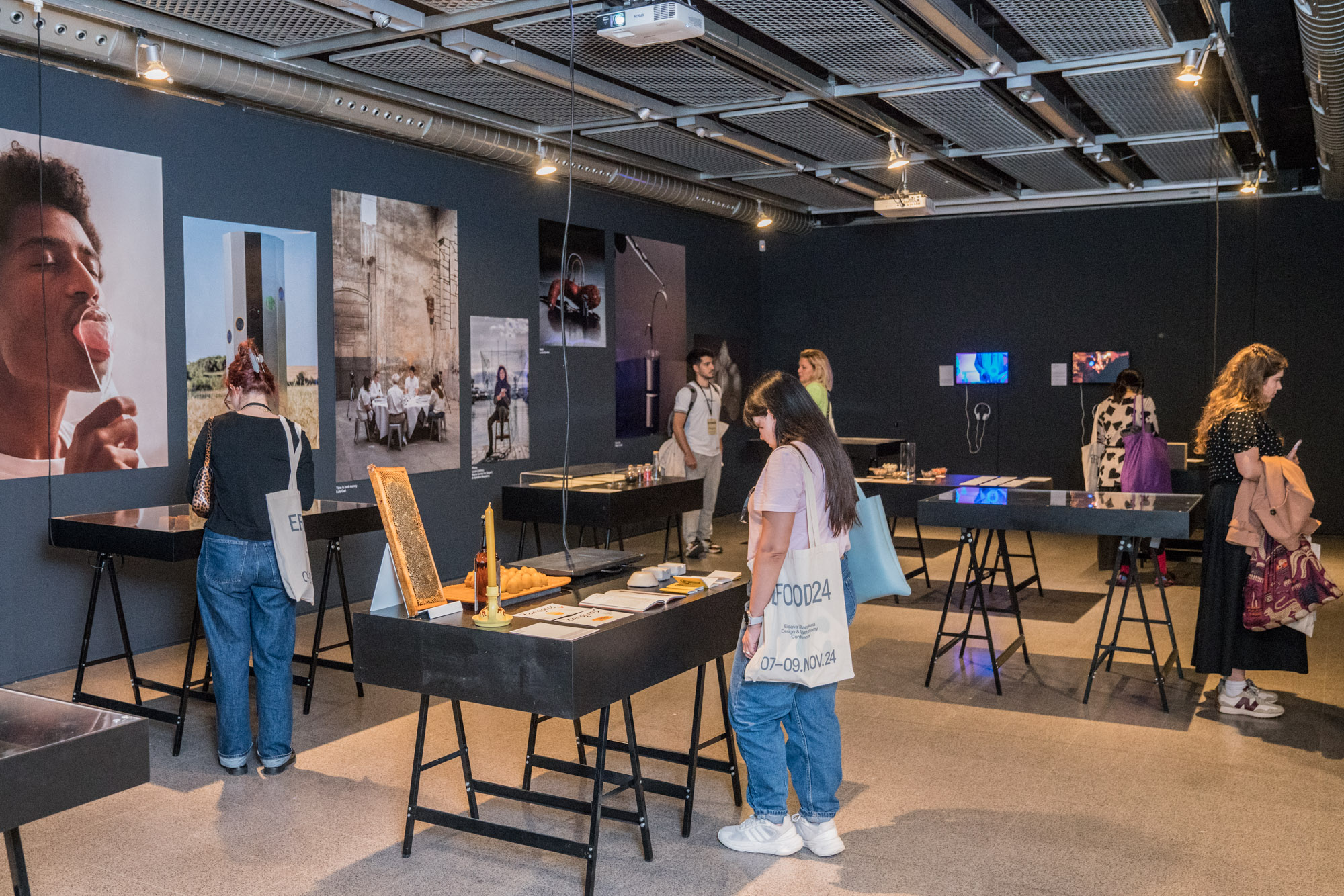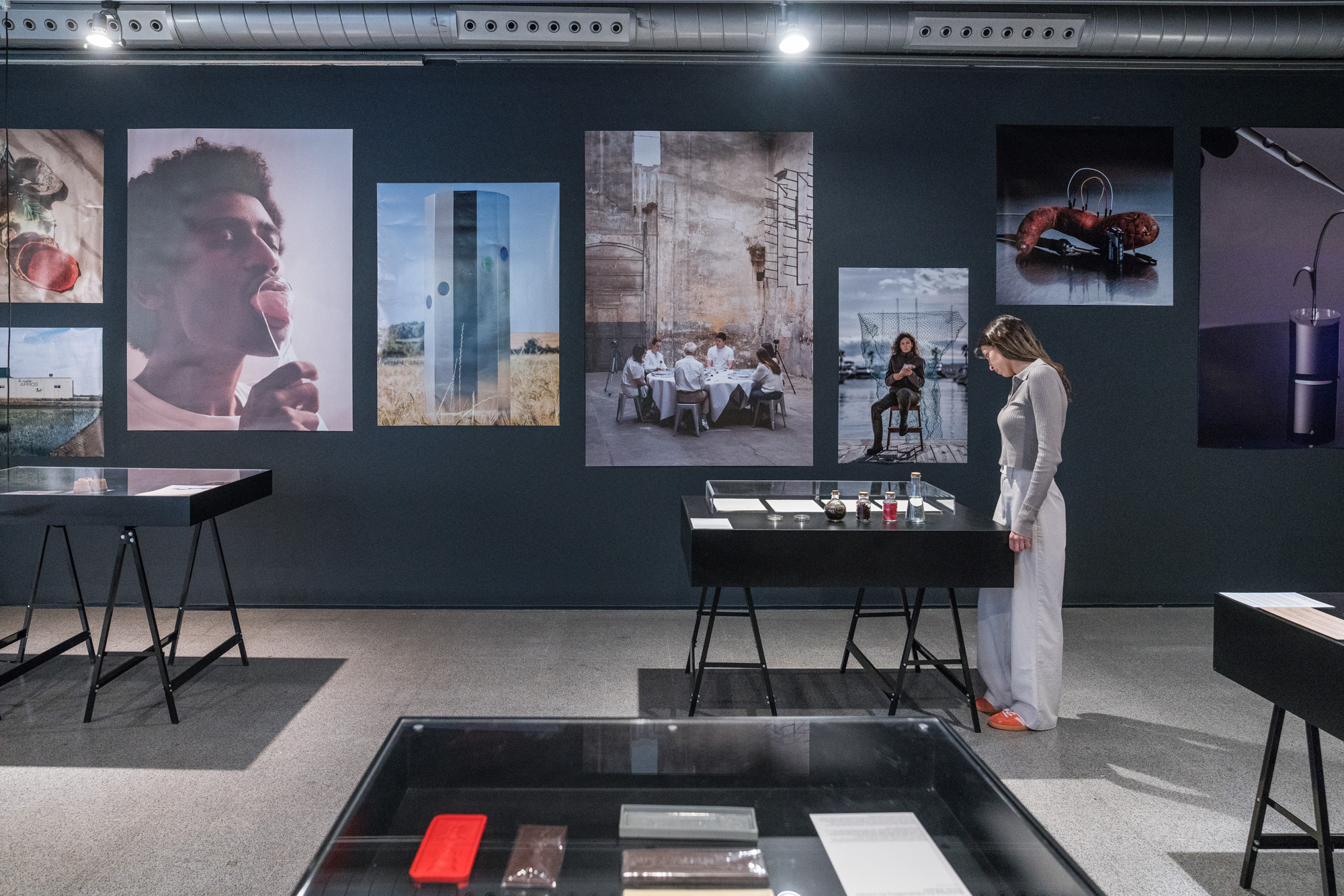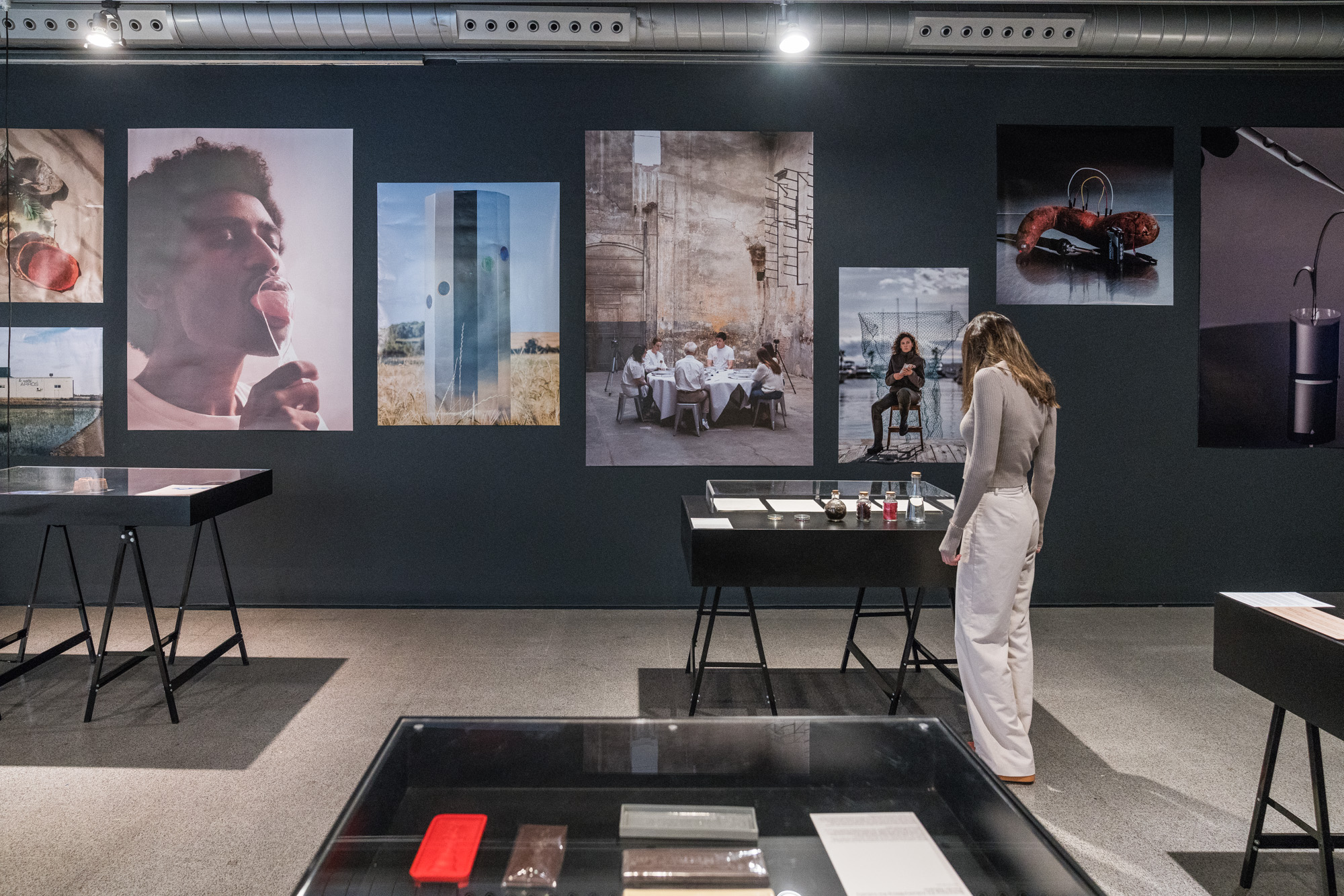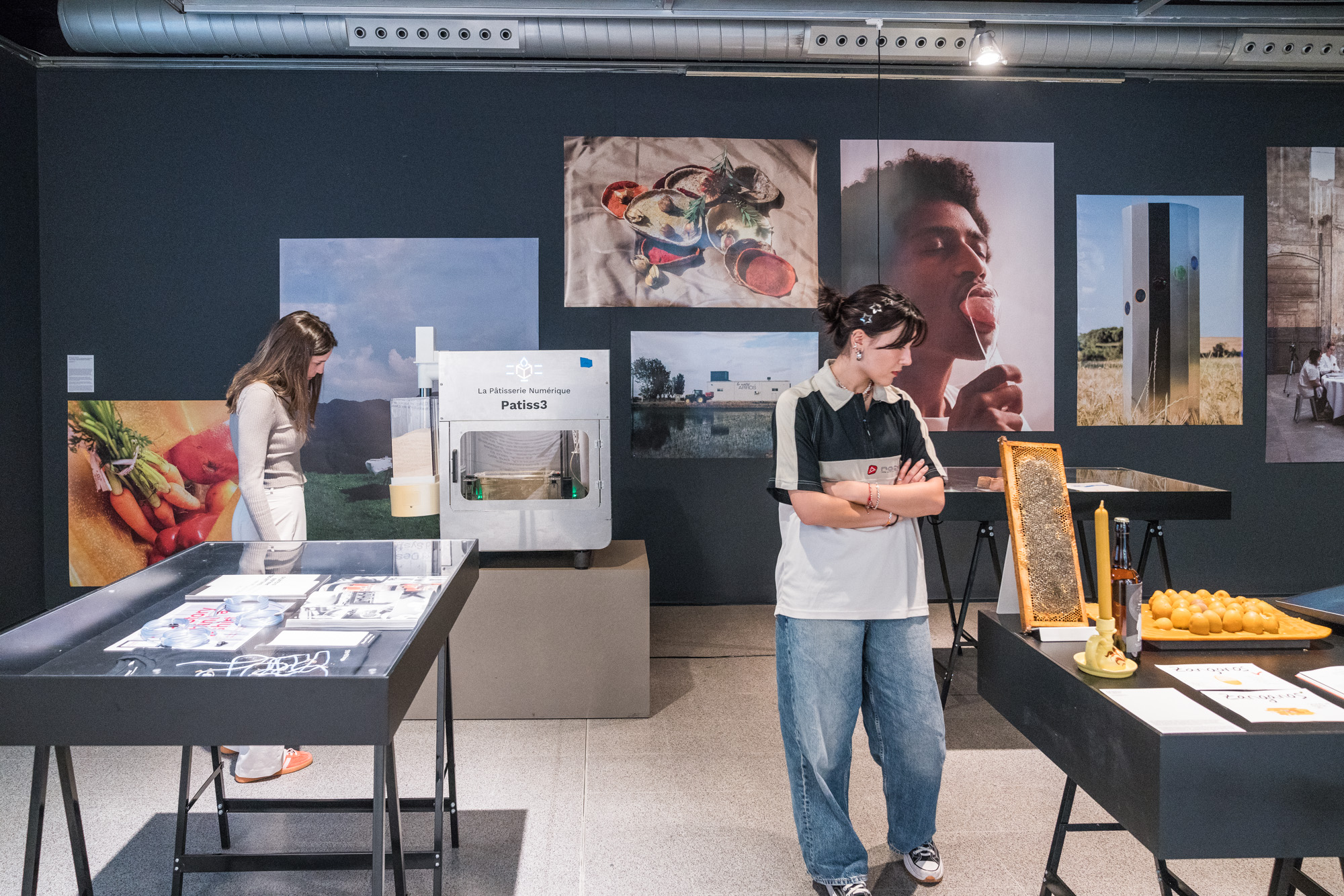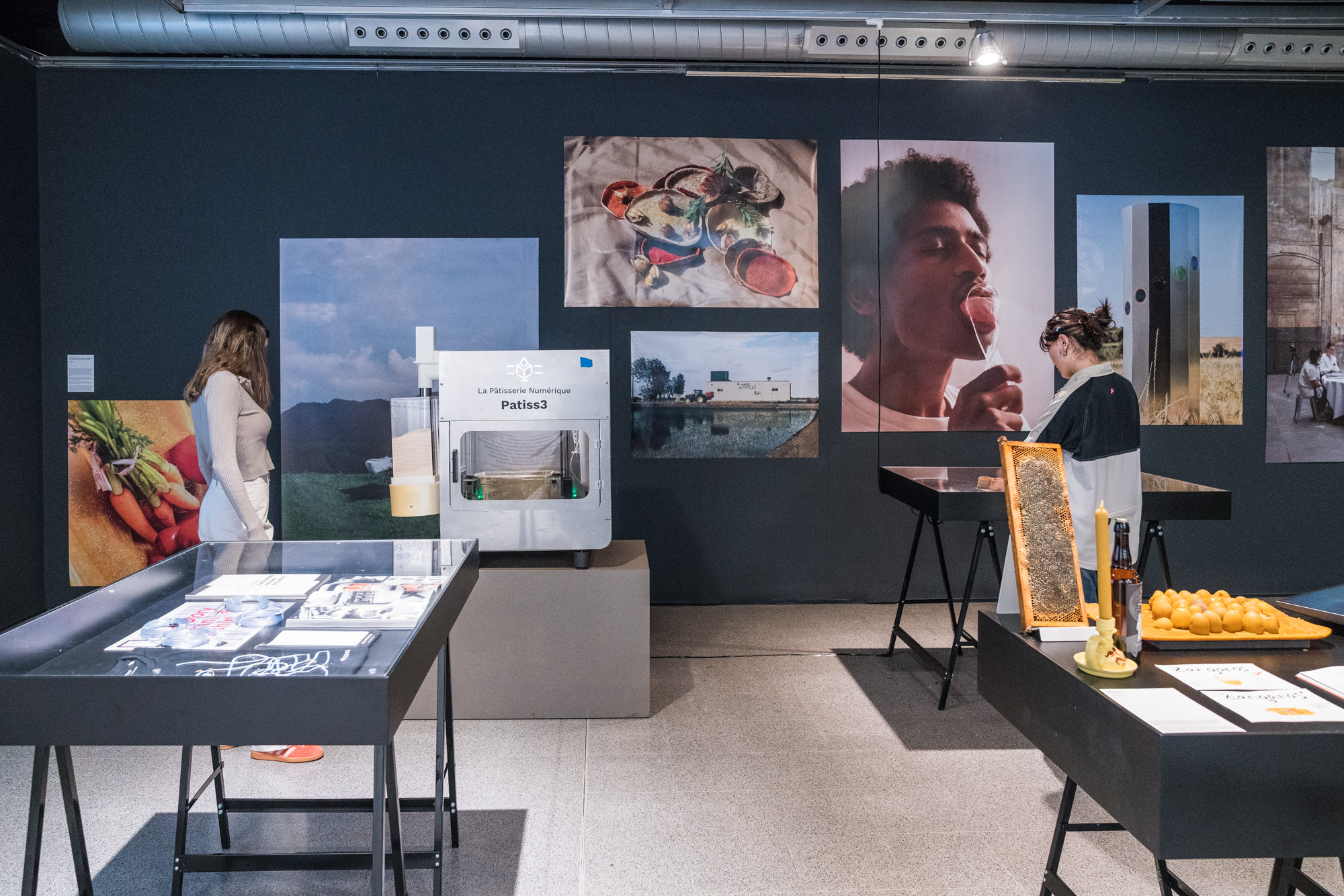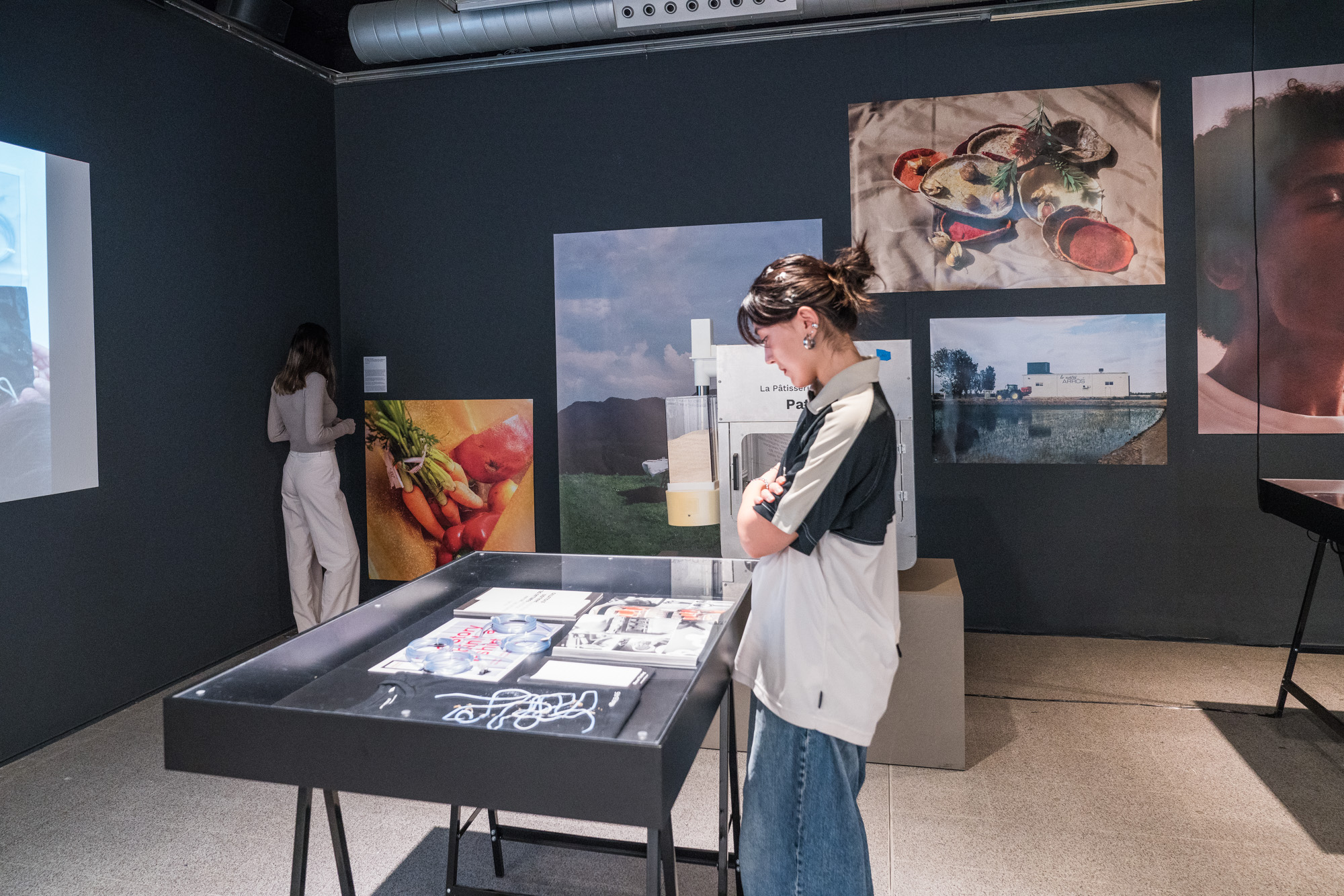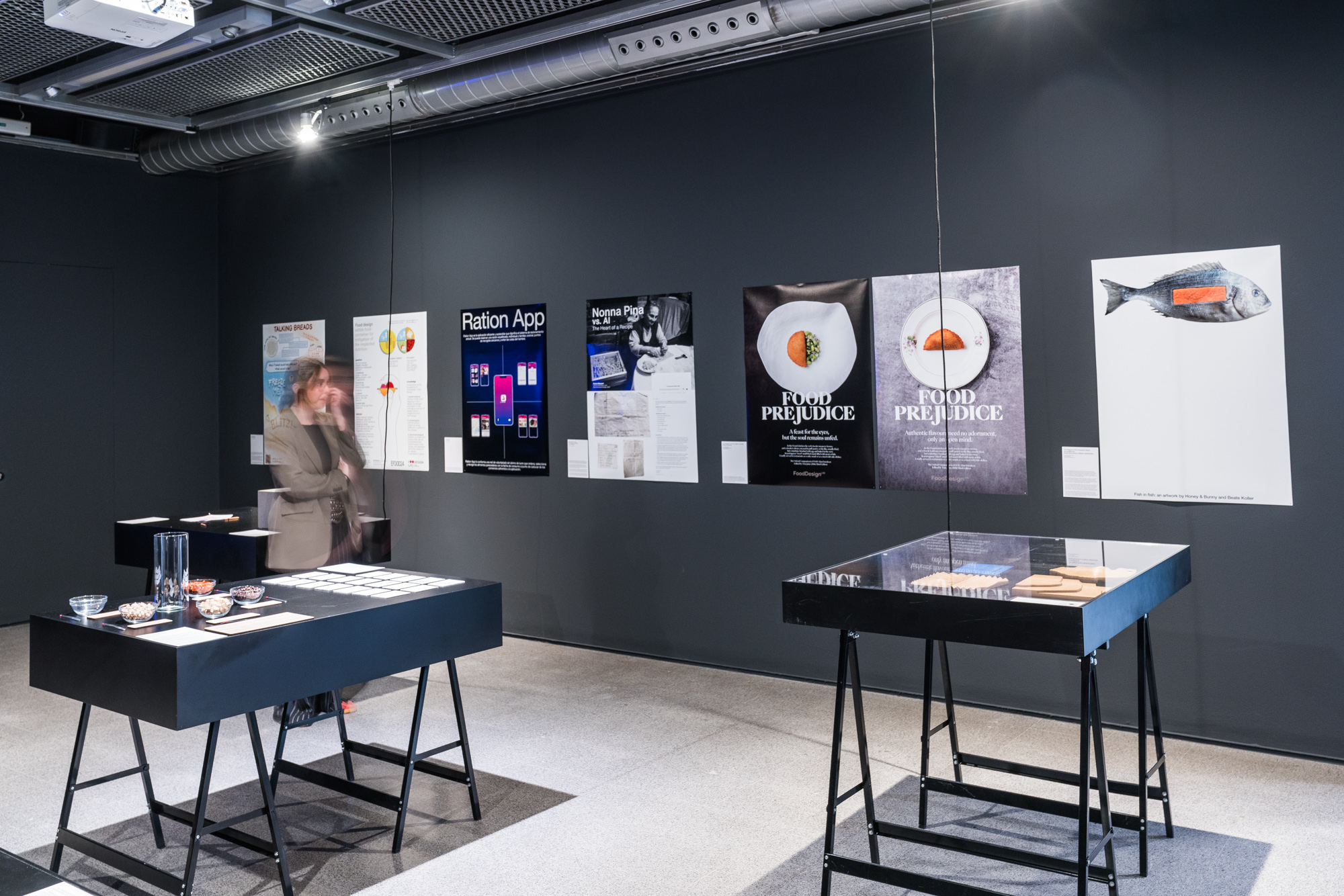Prioritising the places and people that need it the most
B(i)TES
B(i)TES – Mapping Food Design through Phygital Food Systems
B(i)TES – Mapping Food Design through Phygital Food Systems redefines recipes as a connection between the physical and digital realms, emphasizing their potential to envision sustainable, regenerative food futures. The project exhibition showcases visionary food designers who created speculative recipes that blend food, design, and technology. Through objects, performances, and digital media, B(i)TES investigates food design's role in developing resilient global food systems.
Spain
National
It addresses urban-rural linkages
It refers to other types of transformations (soft investment)
Yes
2024-11-08
No
No
Yes
Yes
No
As a representative of an organisation, in partnership with other organisations
B(i)TES redefined recipes as more than just cooking instructions—it transformed into speculative tools for exploring food’s role in shaping sustainable futures. The project exhibition emphasized how food design can tackle urgent ecological, political, and social challenges by merging physical and digital dimensions. B(i)TES fostered interdisciplinary collaboration to rethink food’s impact on global systems by bringing together food designers, chefs, architects, technologists, and cultural institutions. The exhibition featured “total recipes” incorporating ingredients and their political, infrastructural, and ecological dimensions, showcasing food as a transformative force. Through performances, objects, and digital experiences, the exhibition invited audiences to engage with phygital food design, where multisensory interactions deepen our relationship with food. Participants, including designers, chefs, and institutions, explored regeneration, cultural adaptation, and sustainability themes. By challenging traditional notions of food and design, B(i)TES ignited dialogue, inspired new regenerative practices, and encouraged collective action toward more inclusive, resilient food systems.
Phygital
Sustainability
Speculative
Food Design
Food Systems
B(i)TES reimagined sustainability by redefining recipes as holistic tools encompassing ecological, social, and political dimensions. The exhibition challenged traditional food systems by presenting speculative recipes that account for ingredients and their environmental impacts, supply chains, and regenerative potential. By blending physical and digital experiences, B(i)TES explored new ways to engage with food while minimizing waste and resource consumption. Digital platforms enhanced accessibility, reducing material use while promoting global discussions on food sustainability. The exhibition emphasized circular food practices, sustainable sourcing, and alternative production models that align with ecological principles. Through interdisciplinary collaboration, designers, chefs, and researchers proposed innovative food solutions that fostered biodiversity, minimized waste, and encouraged regenerative agriculture. The exhibition catalyzed dialogue, inspiring policymakers, communities, and industries to reconsider food design as a means for climate resilience and cultural adaptation. By showcasing progressive approaches to food sustainability, B(i)TES established a benchmark for how food design can drive systemic change, providing a scalable and replicable model for future initiatives that connect food, technology, and environmental responsibility.
B(i)TES transformed the aesthetics of food design by merging materiality with digital innovation, creating a multisensory and thought-provoking experience. The exhibition elevated recipes beyond their traditional forms, presenting them as speculative artifacts that blend storytelling, performance, and immersive installations. By engaging designers, artists, and chefs, B(i)TES curated a visually and conceptually rich landscape where food serves as a medium for cultural expression and systemic reflection. Through objects, interactive displays, and digital interfaces, the exhibition invited visitors to explore food as both an artistic and political act, fostering deep engagement with sustainability and community well-being. Integrating phygital experiences enhanced the audience’s connection to food, utilizing augmented reality, soundscapes, and tactile interactions to expand the sensory dimensions of eating and designing food. This approach created a dynamic, participatory environment where visitors observed and actively contributed to the evolving narrative of food design futures. By redefining the intersection of food, design, and culture, B(i)TES set a new standard for experiential storytelling in food design, inspiring both professionals and the public to reconsider how aesthetics and innovation shape our collective food experiences.
B(i)TES championed inclusion by redefining food as a shared, accessible, and participatory experience. The exhibition dismantled traditional barriers in food design by presenting recipes as open, speculative frameworks that invite diverse perspectives, ensuring that sustainability, culture, and technology are available to everyone. Through phygital storytelling, the project extended beyond physical installations, using digital tools to enhance accessibility for remote audiences. Online platforms, augmented reality, and interactive media enable individuals from various backgrounds to engage with the content, breaking down economic and geographic limitations. By incorporating voices from multiple disciplines, cultures, and social structures, the exhibition highlights food as a means for empowerment and systemic transformation. It encourages dialogue among policymakers, designers, and communities, fostering inclusive decision-making processes that rethink food governance and equitable distribution. The speculative recipes challenged elitist narratives in food innovation, advocating instead for affordable, adaptable, and culturally relevant food systems. By prioritizing inclusivity, B(i)TES serves as a model for food design that is both visionary and deeply democratic, fostering a future where food is a medium for connection, equity, and shared resilience.
B(i)TES actively engaged citizens and civil society by positioning food as a collaborative, participatory tool for systemic change. Instead of a static exhibition, the project fosters an interactive dialogue where communities, policymakers, and designers co-create new food narratives. Local and international participants shared their perspectives, traditions, and concerns through open calls, workshops, and discussions, ensuring the speculative recipes reflect diverse realities. Community engagement is central, with food activists, researchers, and everyday citizens influencing how food is represented and understood. Digital platforms further democratize access, enabling global audiences to explore speculative food futures and share insights, promoting a collective knowledge exchange. This participation has expanded the project’s scope, introducing grassroots innovations, cultural nuances, and social needs that might otherwise be overlooked in traditional food design frameworks. By amplifying citizen voices and embedding community-driven ideas, B(i)TES transforms food design from an exclusive practice into a shared, inclusive conversation, ensuring that sustainability and innovation are co-developed with those directly affected by the future of food systems.
B(i)TES was built on multi-level collaboration, engaging stakeholders across local, regional, national, and European contexts to shape a holistic and impactful vision for food design. At the local level, food designers, artists, chefs, and researchers contributed speculative recipes that reflected food's cultural, ecological, and political dimensions. Community organizations and activists provided grassroots perspectives, ensuring that food sustainability and accessibility remain central to the project. At the regional and national levels, institutions such as ELISAVA, Food Design Lab Lisbon, FORK, and Foodscapes played a key role in curating and structuring the exhibition, fostering interdisciplinary exchanges. Collaborations with policymakers and food innovation hubs strengthen discussions on design-driven approaches to sustainable food systems, influencing public discourse and potential policy shifts. At the European level, B(i)TES connected with international networks of food designers, academic institutions, and cultural organizations, amplifying the conversation on phygital food systems and regenerative futures. This broad engagement facilitates knowledge sharing, encourages cross-border initiatives, and positions food design as a tool for systemic change across diverse socio-political landscapes. By integrating stakeholders at all levels, B(i)TES fosters a dynamic, co-created ecosystem, ensuring that design solutions for food are both visionary and deeply embedded in real-world needs, making it a model for interdisciplinary collaboration and systemic impact.
B(i)TES is a deeply interdisciplinary project, merging knowledge from food design, digital innovation, sustainability, politics, anthropology, and sensory experiences to redefine the role of recipes as speculative tools for systemic change. Food designers, chefs, and artists collaborated with technologists, architects, and sustainability experts to create “total recipes”—conceptual frameworks considering food’s cultural, political, and ecological dimensions. These interactions blur boundaries between disciplines, fostering new perspectives on food as an interface between materiality, society, and technology. Anthropologists and sociologists contributed by analyzing the cultural narratives behind food, while policy experts and environmental researchers examined how food systems intersect with governance and climate challenges. Digital innovators explored phygital interactions, integrating augmented reality and sensory storytelling to expand how audiences engage with food. This cross-disciplinary dialogue enriched the exhibition’s content and pushed the boundaries of food design, demonstrating how merging knowledge fields can generate transformative, inclusive, and regenerative food futures. B(i)TES is a model for integrating diverse expertise to drive meaningful, systemic change in how we produce, consume, and experience food.
B(i)TES challenged the traditional role of recipes, transforming them from simple cooking instructions into speculative tools for systemic change. Unlike mainstream food design projects focusing on aesthetics, gastronomy, or sustainability in isolation, B(i)TES integrates food, politics, ecology, and digital innovation, creating a phygital experience redefining how we engage with food. By merging physical and digital realms, the exhibition goes beyond traditional food storytelling, incorporating augmented reality, interactive installations, and sensory-driven narratives. This approach allows for multi-layered engagement, where audiences see, experience, and question the deeper implications of food systems. Instead of showcasing finished products, B(i)TES presents "total recipes"—concepts encompassing ingredients, supply chains, socio-political structures, and environmental impact, positioning food as an interface for exploring future societal models. Including interdisciplinary experts, from designers and chefs to policymakers and technologists, ensures that food is examined through a holistic and regenerative lens. This project stands out by bridging speculative design with real-world applications, offering a visionary yet pragmatic approach to food’s role in shaping resilient, inclusive futures. B(i)TES is not just about food—it is about rethinking how we design, experience, and sustain the systems that feed us.
B(i)TES employed a speculative and interdisciplinary methodology, using food as a lens to explore systemic transformations. The project is structured around the concept of “total recipes,” which go beyond ingredients to integrate political, infrastructural, and ecological dimensions of food production and consumption. The approach combines design research, speculative design, and participatory engagement, allowing food to be examined as a multi-layered cultural and environmental system. Through workshops, collaborations, and open calls, experts from food design, digital innovation, sustainability, anthropology, and policy-making co-developed speculative food scenarios highlighting future possibilities. A key aspect of the methodology is the phygital experience, where physical and digital interactions merge to create multi-sensory, immersive storytelling. Augmented reality, interactive installations, and performative elements expand the traditional food exhibition format, inviting audiences to observe and actively engage with food futures. By blending practical design interventions with conceptual speculation, B(i)TES fosters critical reflection, creative exploration, and real-world impact, making food design a catalyst for envisioning resilient, inclusive, and sustainable systems.
B(i)TES offered a scalable and adaptable framework that can be replicated across different regions, communities, and disciplines. The core concept of “total recipes”—which merge food, politics, ecology, and technology—can be applied to various cultural, social, and environmental contexts, encouraging localized explorations of food futures. The phygital methodology blends physical experiences with digital interactions and provides a flexible model for engaging diverse audiences. Augmented reality, interactive installations, and digital storytelling can be tailored to different technological infrastructures, making the approach accessible and adaptable for institutions, museums, and food initiatives worldwide. Workshops and participatory processes used in B(i)TES can be transferred to educational settings, policy discussions, and grassroots movements, fostering community-driven innovation in food systems. The speculative and interdisciplinary format encourages cross-sector collaboration, making it an effective tool for designers, scientists, policymakers, and cultural practitioners to explore sustainable and inclusive food strategies. By integrating digital tools, speculative design, and collaborative knowledge-sharing, B(i)TES provides a replicable blueprint for rethinking food as a medium for systemic transformation, inspiring new projects that address food sustainability, cultural adaptation, and social resilience in diverse contexts.
B(i)TES addressed global food challenges—climate change, food insecurity, cultural erosion, and unsustainable supply chains—by proposing localized, design-driven solutions that rethink how we produce, consume, and experience food. By redefining recipes as systemic tools, the project explores how food design can support regenerative agriculture, reduce waste, and strengthen biodiversity. It highlights local food traditions as a means to foster sustainability while embracing digital tools to create scalable, adaptable solutions that connect communities worldwide. The phygital approach allows for multi-sensory engagement with food, offering new ways to educate, raise awareness, and inspire behavioral shifts. By merging digital innovation with tangible food experiences, B(i)TES bridges cultural and technological gaps, making sustainability more accessible and interactive. The project connects local expertise with global discourse through its interdisciplinary framework, showing how design, policy, and cultural practices can collaboratively shape resilient food systems. By linking speculative design with real-world applications, B(i)TES demonstrates how localized interventions can inspire systemic change, proving that food's future is rooted in place and globally interconnected.
B(i)TES has generated transformative outcomes by redefining how food design can address sustainability, culture, and digital innovation. The project has empowered food designers, policymakers, researchers, and local communities to engage with food as a tool for systemic change, impacting both direct and indirect beneficiaries. Among its key results, B(i)TES has fostered interdisciplinary collaboration, bringing designers, chefs, scientists, and technologists together to create speculative food futures that inspire new approaches to food sustainability and governance. The project has reached a broad audience through exhibitions, performances, and digital platforms, raising awareness of phygital food systems and their potential to shape a more resilient, inclusive food future. For direct beneficiaries, such as participating designers and institutions, B(i)TES has provided a platform for knowledge exchange, creative experimentation, and cross-sector innovation. For indirect beneficiaries, including policymakers and the general public, it has sparked discussions on food sovereignty, regenerative agriculture, and the role of design in food policy. The project’s phygital methodology ensures long-term accessibility, allowing insights and tools developed within B(i)TES to be replicated in different cultural and geographical contexts. By challenging conventional narratives, B(i)TES has positioned food design as a powerful, scalable solution to pressing global challenges impacting food systems, communities, and the future of design.

